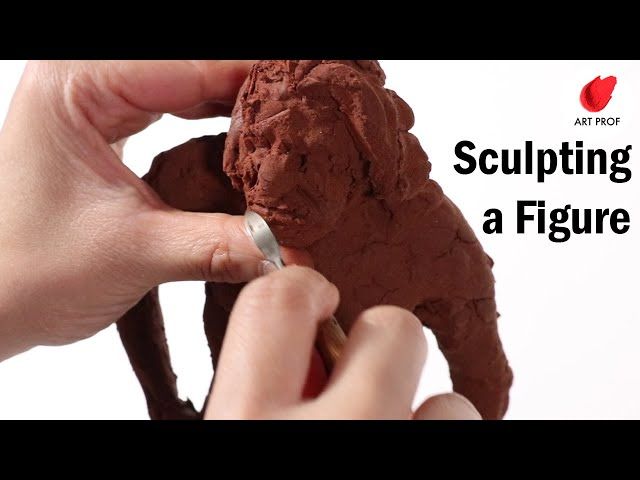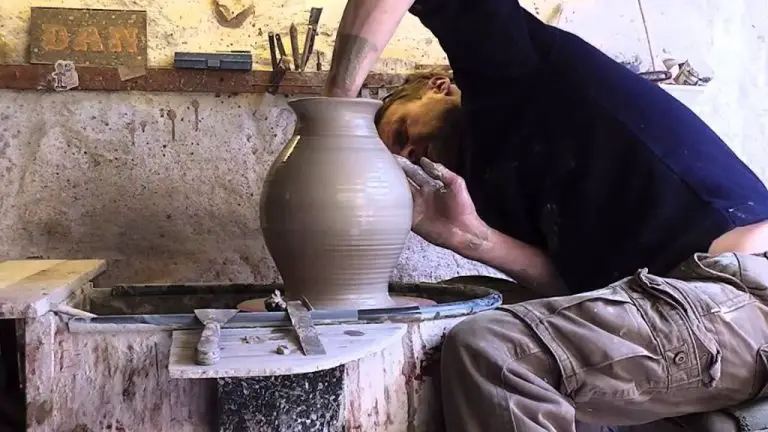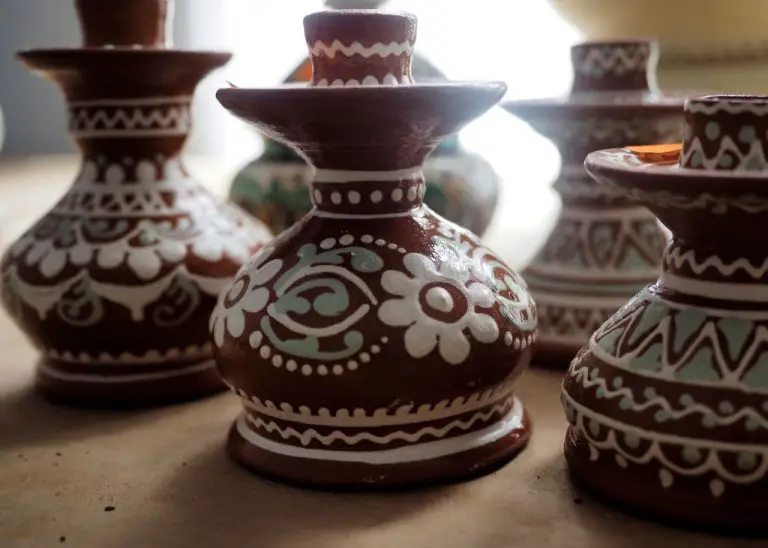Can You Throw Pottery With Air Dry Clay?
What is Air Dry Clay?
Air dry clay, also referred to as “art clay” or “pottery clay”, is a modeling material that allows users to craft ceramic-like pieces that harden when left out to dry. Unlike traditional pottery clay that needs to be fired in a kiln to harden, air dry clay hardens naturally by drying out through evaporation. This makes air dry clay a convenient and accessible material for crafters of all levels looking to make functional pieces as well as decorative arts and crafts.
The main properties of air dry clay that differentiate it from other clays are:
- Does not require baking or firing to harden
- Dries naturally at room temperature
- Has a smooth, malleable texture when wet
- Hardens into a ceramic-like finish when dry
- Available in white and terracotta colors
- Non-toxic and safe for kids
With proper care, pieces made from air dry clay can last for years. The clay offers versatility for all types of crafting projects from jewelry and dolls to decorative bowls and figurines. Its air-drying properties provide a quick and convenient material for novice to advanced crafters.
Is Air Dry Clay Suitable for Throwing?
Air dry clay is quite different from traditional pottery clay in terms of composition and properties. Pottery clay contains minerals that allow it to be fired at high temperatures to become ceramic. In contrast, air dry clay is made from materials like cellulose and gypsum that simply harden as the water evaporates.
While air dry clay can technically be used on a pottery wheel, it presents several challenges:
- Air dry clay is quite soft and sticky compared to pottery clay. This makes it more difficult to center and shape on the wheel.
- Pieces made with air dry clay are quite fragile, especially when wet. So throwing thin-walled vessels is very tricky.
- Air dry clay is not as plastic as pottery clay, meaning it’s less malleable. So you have a shorter working time before it starts to dry and crack.
- Details sculpted into air dry clay pieces will not hold their shape as well as those made with pottery clay.
- Without firing, air dry clay remains porous and fragile. Pieces may break or crumble more easily over time.
While throwing air dry clay on the wheel provides an interesting challenge for experienced potters, beginners may find it quite frustrating. The limitations of the medium make it difficult to produce refined vessels comparable to those made with high-fire clay bodies. Most potters recommend using specialty polymer or earthen clays designed for handbuilding and modeling when working with air dry mediums.
Tips for Throwing with Air Dry Clay
Air dry clay can be tricky to throw properly on the wheel. Here are some tips to help ensure success:
Center the clay well before starting. Take your time wedging and centering the clay on the wheel – this helps prevent cracking and uneven throwing. Use water and your hands to carefully center until the clay is perfectly centered and not wobbling.
Apply slip to the clay. Create some “slip” – a mixture of water and clay. Apply this mixture to the clay on the wheel as you would with regular clay. The slip helps lubricate and smooth the surface.
Work efficiently and quickly. Air dry clay dries out faster than regular clay. Work deliberately and quickly when throwing to finish before the clay dries and cracks. Taking breaks allows the clay to dry out.
Keep the clay moist. Have a spray bottle of water and frequently mist the clay while working to keep it moist and prevent cracking/drying out. Cover in plastic wrap when not working.
Types of Items You Can Throw
Air dry clay can be used to create a variety of thrown pieces. Here are some of the common items that work well when thrown with air dry clay:
Simple Bowls, Cups, and Vases
Bowls, cups, and vases with simple, rounded shapes tend to be the easiest pieces to throw with air dry clay. The clay holds its shape nicely for these types of cylindrical forms, allowing you to practice fundamental throwing techniques.
Small Decorative Pieces
In addition to functional wares, air dry clay is well-suited for throwing small decorative items. Things like trinket dishes, little boxes, and decorative bowls or vases are fun projects. The smaller scale makes these items easier to throw and decorate.
Recommended Air Dry Clay Brands
When selecting an air dry clay brand for throwing pottery, it’s important to choose one with the right properties. Here are some top brands to consider:
Sculpey Air Dry Clay – Sculpey is one of the most popular brands for air dry modeling clay. Their air dry formula is lightweight and easy to work with. It fires bright white and is very smooth. Great for sculpting detailed pieces.
Activ-Clay – This pliable, non-toxic clay has excellent drying properties that prevent cracking. It has a smooth, creamy texture that’s great for throwing on the wheel. Colors available include white, terra cotta and gray.
Valspar Air Dry Clay – Valspar clay has a soft, pliable texture that makes throwing easy. It dries hard and durable. The neutral gray color works well for painting and glazing finished pieces.
Hearty Air Dry Clay – As the name suggests, this brand is extremely durable even in thin areas. The smooth, ultra-fine texture makes it ideal for throwing thin-walled pieces on the wheel.
When selecting an air dry clay, opt for one labeled “wheel throwing formula” or check reviews to confirm others have success using it on the pottery wheel. Stay away from clays that crack easily or have a gritty/brittle texture when dry.
Pros and Cons of Throwing with Air Dry Clay
Air dry clay has both advantages and disadvantages when used for throwing pottery on the wheel. Here are some of the main pros and cons to consider:
Pros:
- Inexpensive – Air dry clay is very affordable, especially compared to other clays like stoneware or porcelain. This makes it accessible for beginners who want to try throwing without a big investment.
- Accessible – Since air dry clay doesn’t require a kiln or any special tools, it is easy to find and start using right away. You can throw pieces at home without any additional equipment.
Cons:
- Limited working time – Air dry clay can start to dry out while throwing, so you have a finite amount of time to throw a piece before it gets too stiff. This can be frustrating for complex pieces.
- Less durable – Items made from air dry clay are fragile and porous. They don’t hold up as well to frequent handling and use compared to kiln-fired clay.
Tips for Beginners
If you’re new to throwing pottery, start with some basic shapes to get the hang of working with air dry clay on the wheel. Simple cylinders and bowls are a good place to begin. As you get more comfortable with the process, you can try your hand at more complex pieces.
Before getting started, make sure your work area and tools are prepared. Have your wheel set up with enough workspace around it. Organize your tools within reach. Lay down a drop cloth or plastic sheet to keep your floor clean. Wear an apron to protect your clothing from splatters.
Watching tutorial videos can be tremendously helpful when learning any new craft. Search for throwing techniques using air dry clay specifically. Observe how the clay is centered on the wheel, opened up, raised into walls, shaped, and refined. Having a visual guide will give you an advantage before attempting it yourself.
Alternative Uses for Air Dry Clay
While air dry clay can be used on the pottery wheel, it also has many other creative uses as well.
One of the most popular uses is handbuilding and sculpting. Air dry clay is an excellent choice for handbuilding because it is lightweight and easy to manipulate into different shapes and forms. Many artists enjoy sculpting detailed figurines, jewelry, and decorative objects out of air dry clay.
Air dry clay is also commonly used for various craft projects. Simple shapes like beads, pendants, and buttons can easily be molded by hand. The clay can also be rolled flat and cut into shapes using cookie cutters or craft punches. Kids often enjoy making DIY magnets, picture frames, boxes, and more out of air dry clay.
Overall, air dry clay is extremely versatile for anything from free-form sculping to small craft projects. Its air drying quality makes it easy to use and limits the need for baking or firing pieces.
Finalizing and Decorating Pieces
Once your air dry clay pieces are fully dried and hardened, there are a few finishing touches you can add to give them more visual appeal. Two main decoration techniques to consider are sanding/smoothing and painting/glazing.
Sanding and smoothing your air dry clay pieces will help remove any cracks, fingerprints, or other small imperfections from the drying process. Start with a coarse grit sandpaper and gently rub over the entire surface, then switch to finer grits to polish it smooth. You can also use wet sandpaper and water to get a perfectly smooth finish.
Painting or glazing air dry clay is a great way to add color and vibrancy. Acrylic craft paint works well and will adhere easily. You can paint designs, patterns, or coat the entire piece in a solid color. For a glossy finish, brush on a clear acrylic glaze after the paint has dried. You can also mix paints with the glaze to create custom tinted glazes. Glazing will help smooth the surface and add a nice shine.
Get creative with paints, glazes, colored pencils, or markers to make your finished air dry clay pieces truly unique. The decoration options are endless!
Caring for Air Dry Clay Pieces
After creating a beautiful piece from air dry clay, it’s important to properly care for the finished item so that it will last. Follow these tips for caring for your air dried clay pottery and other arts and crafts:
First, be sure to allow adequate drying time before handling, painting, or varnishing your creation. Air dry clay needs time for the moisture to fully evaporate so it gains strength and rigidity. Depending on factors like thickness, humidity, and air circulation, drying can take 1-3 days or longer. Test pieces gently to ensure they are completely hardened before proceeding.
Next, seal and protect finished air dried clay pieces using a spray acrylic sealer, polyurethane, or clear acrylic paint. This helps prevent damage, fading, dirt buildup, and keeps them looking vibrant. Apply 2-3 even, thin coats and let fully dry between applications. Avoid over-saturating the piece. Apply a fresh coat every 1-2 years for optimal protection.



